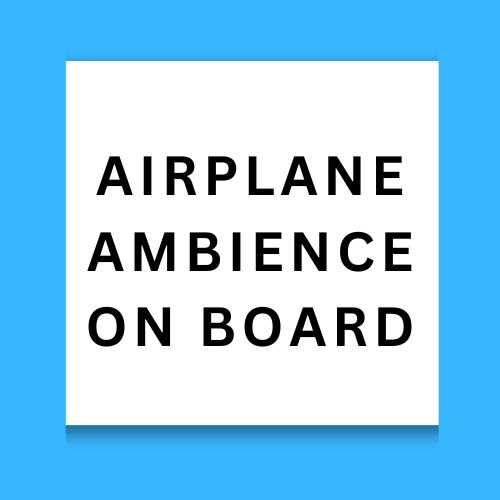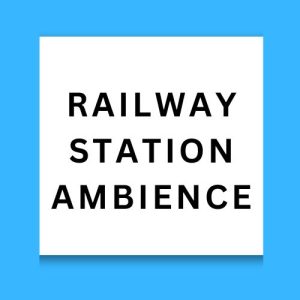Here is more free sound effects for you:
Title: Immerse Yourself in the Calm of Airplane Ambience on Board
Description:
Experience the unique and soothing sounds of air travel with “Airplane Ambience on Board.” This audio track captures the essence of an airliner in flight, creating a relaxing and immersive auditory environment perfect for various uses. Whether you’re looking to enhance your concentration, meditate, or simply unwind, this ambient track provides the perfect backdrop.
The Soundscape:
“Airplane Ambience on Board” is a meticulously crafted audio experience that brings you the authentic sounds of a commercial aircraft’s interior. The primary sound in this track is the steady hum of jet engines, a sound that many travelers find both calming and reassuring. This constant, rhythmic noise is complemented by light, indistinct chatter from nearby passengers, adding to the realism of the scene without being intrusive or distracting.
The blend of these elements creates an atmosphere that is both dynamic and tranquil. The engine hum provides a consistent, soothing background noise that can help mask other, more distracting sounds in your environment. At the same time, the occasional murmur of conversation adds a layer of human presence, making the experience feel more natural and engaging.
Uses and Benefits:
- Concentration and Focus:
The consistent drone of the engines in “Airplane Ambience on Board” can help improve your concentration and focus. Many people find that white noise or ambient sounds help them stay on task by masking other distracting noises. Whether you’re working on a project, studying for an exam, or trying to write, this track can provide a serene audio backdrop that enhances your productivity. - Relaxation and Stress Relief:
The calming effect of airplane ambience can be a powerful tool for relaxation and stress relief. The steady, predictable noise of the engines can help soothe anxiety and promote a sense of calm. Listening to this track while meditating, practicing yoga, or simply unwinding at the end of a long day can help you achieve a deeper state of relaxation. - Sleep Aid:
For those who struggle with falling asleep or staying asleep, “Airplane Ambience on Board” can be a valuable aid. The continuous, gentle hum of the engines can serve as a form of white noise, helping to drown out disruptive sounds and create a more peaceful sleeping environment. Many people find that this type of ambient noise helps them fall asleep faster and enjoy a more restful night’s sleep. - Creative Projects:
This ambient track is also ideal for use in creative projects. Whether you’re a filmmaker, game designer, or content creator, “Airplane Ambience on Board” can add an authentic touch to your work. Use it to create realistic soundscapes for scenes set on an airplane, or as background noise in virtual reality experiences. The high-quality audio ensures that it blends seamlessly into your project, enhancing the overall atmosphere. - Travel Simulation:
If you’re someone who loves to travel or misses the experience of flying, this track can help recreate that feeling at home. Close your eyes, put on your headphones, and let the sounds of “Airplane Ambience on Board” transport you to a cruising altitude of 30,000 feet. It’s a great way to indulge your wanderlust or prepare yourself mentally for an upcoming trip.
Keywords:
aircraft, airline, airliner, airplane, altitude, ambience, atmosphere, background, cabin, commercial, cruise, cruising, engine, engines, flight, fly, flying, hum, interior, jet, noise, transportation, travel
Conclusion:
“Airplane Ambience on Board” is more than just a sound effect; it’s an immersive audio experience that captures the essence of air travel. Whether you’re looking to boost your focus, relax, improve your sleep, enhance a creative project, or simply enjoy the sounds of flying, this track is the perfect choice. Embrace the tranquility and let the gentle hum of the jet engines and soft passenger chatter take you on a journey, even if you’re staying right where you are.




























